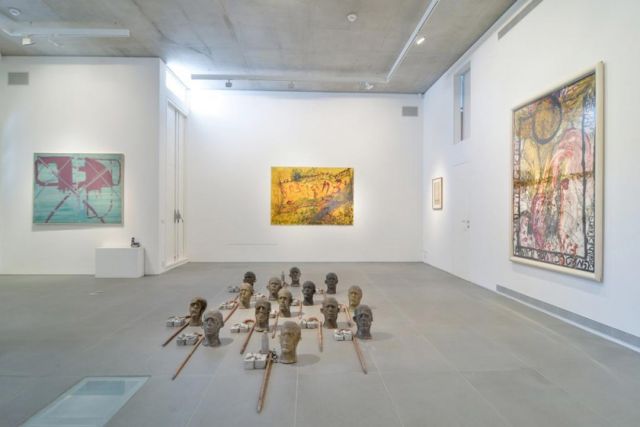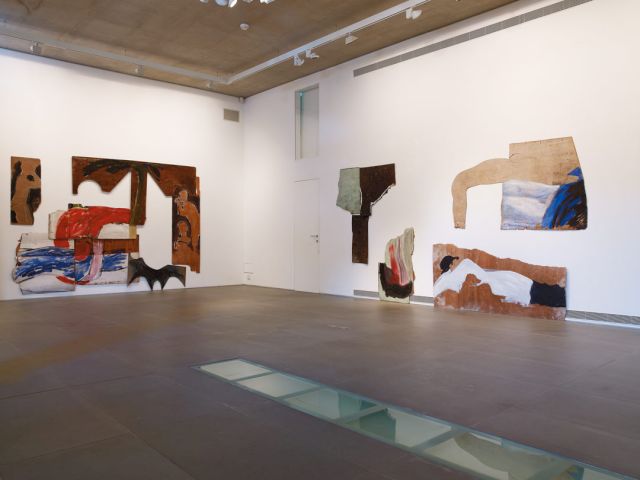BMW Art Guide by Independent Collectors
Eloquent Silences
The Givon Art Forum – Tel Aviv, Israel

The Givon Art Forum is located in one of Tel Aviv’s oldest neighbourhoods, an area known as Neve Tzedek. In this historic part of the city, the Givon Art Forum can be found in a 19th Century residential building restored in gleaming white and grey by the architects, Ori Glazer and Nili Gal Mester. The restoration was a ten year project that involved reinvigorating the syntax of late Ottoman-period architecture with modernist accents. The architects preserved the handsome facade of the building, and the wide, open spaces that characterise the middle-class dwellings of the late 19th Century Levant, but they have also added a number of contemporary elements, integrating, for example, dynamic walls, exposed concrete and glass with columns and floors from the old structure. The gallery in Neve Tzedek is more than just an exhibition space, it is also the home of Noemi Givon, the collector behind the Forum, which was established in 2012. Since its inception, the gallery has hosted seven curated shows involving works by a diverse group of contemporary artists from around the world, while at the same time maintaining a special commitment to nurturing and exhibiting Israeli artists.


The names of the high profile stars included in the gallery’s first show, entitled, "Accelerating Toward Apocalypse"—international figures as Marlene Dumas, Wolfgang Tilmans, Nan Golden and Andy Hope 1930 – give an indication of the breadth of Givon’s collection and her ambition for the exhibition space. In an interview with Una Meistere, Givon spoke about the values and interests that drive her exhibition programme. Most importantly, perhaps, Givon stated that a key goal of the Forum was “to make artwork that has long stood in a warehouse visible again.” Only when artworks circulate can they generate ideas, and ideas are the core of the Forum’s project. Givon is somewhat allergic to the idea of art as a vector for politics, but as she explained to Meistere, she has hope that art can serve to educate and perhaps even to break through the sedimented mindsets politics, particularly national politics, seems increasingly to engender.


The current exhibition at The Givon Forum, “Who is Content and Lives?”, is a case in point. Though in no way an attempt to articulate a specific political agenda, the exhibition, nevertheless, reflects an urgent impulse to question the basic assumptions that underwrite the increasingly fragmented cultural space of the early 21st Century. Taking its name from a work by Nurit David, the exhibition is another ambitious group show. “Who is Content and Lives?” is accompanied by a text that states the starting point for the exhibition is an aesthetic dialogue. Specifically, Yudith Levin’s 1982 work “Pieta” and Michelangelo’s iconic work of the same title. The centrality of negative space in Levin’s work, in the words of the exhibition’s text, speaks of an “absolute that is perceivable only through the manifestation of its absence.” The exhibition’s power, therefore, emerges as much from what is not present as that which is. Levin’s works appear something like puzzle pieces, or even scars, along the smooth white walls of the Givon. The harmonious space of the gallery allows for the meditative quality of the work to steal over the viewer quietly: by seeing what is present, the viewer can understand the importance of what is unseen, but perhaps also what is unspoken. At the Givon Forum, silence can speak louder than words.

William Kherbek is the writer of the novel "Ecology of Secrets" (2013, Arcadia Missa) and "UltraLife" (2016, Arcadia Missa). His art journalism has appeared in a number of publications in the UK, US, Germany, Switzerland and Romania.
All image courtesy The Givon Art Forum, Tel Aviv
More Information on The Givon Art Forum